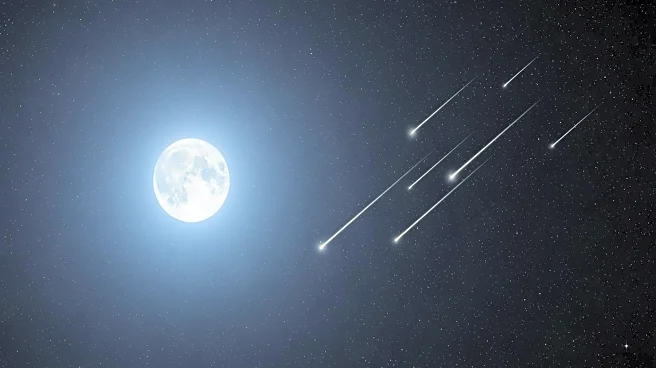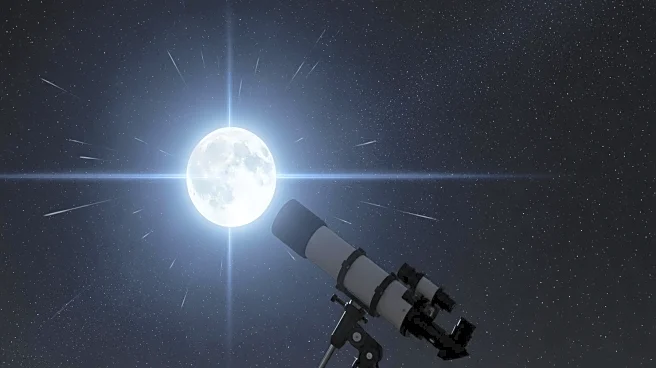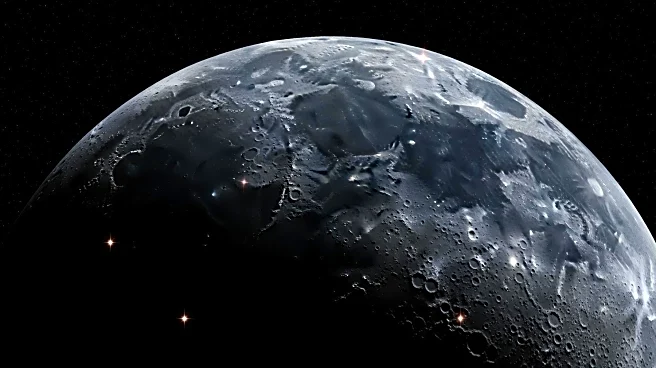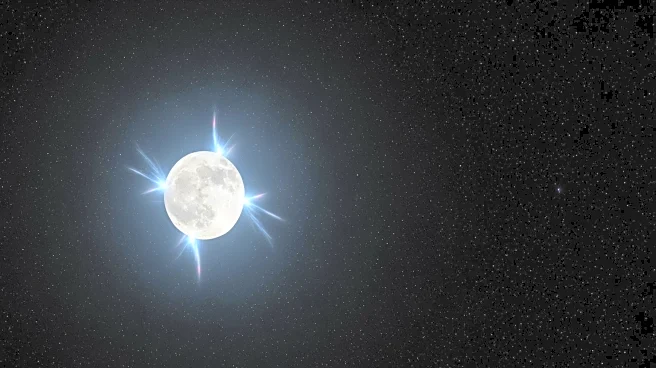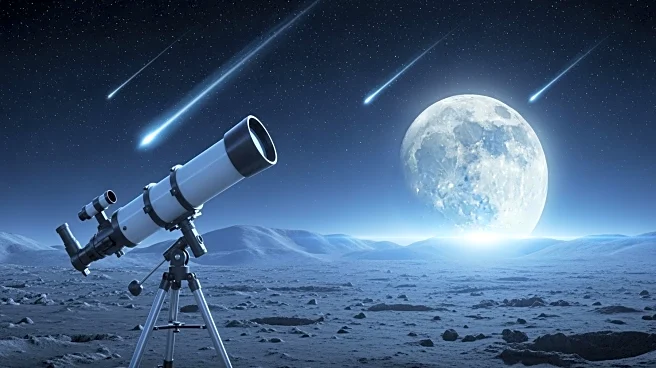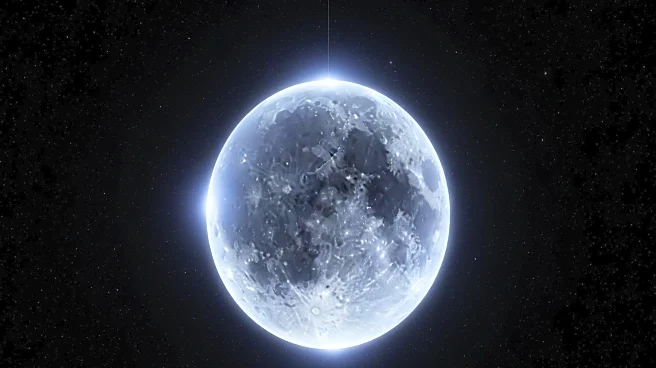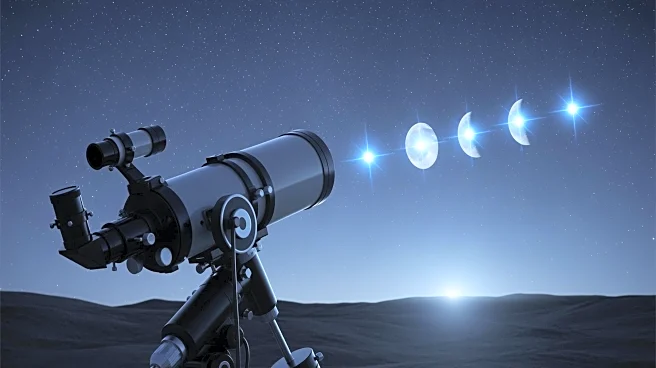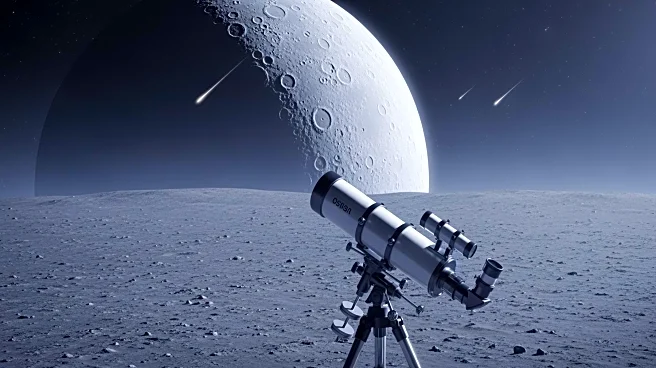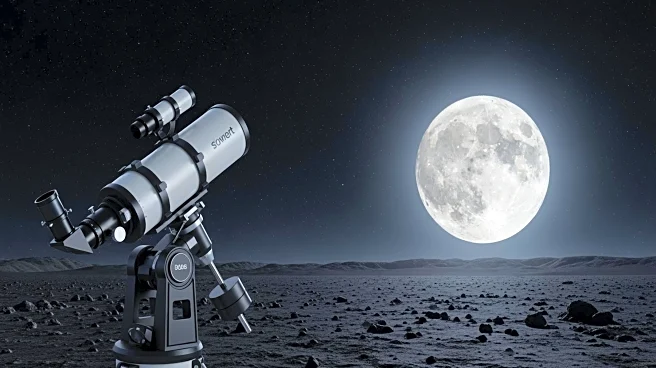What's Happening?
Two bright flashes were observed on the Moon's surface, sparking speculation about their origin. Astronomer Daichi Fujii captured these events, which are believed to be caused by space rocks impacting
the Moon during the Taurid meteor shower. The Taurid shower occurs annually when Earth passes through debris left by Comet Encke, resulting in visible shooting stars. The Moon, lacking an atmosphere, allows meteors to strike its surface directly, creating bright flashes and craters. Fujii's observations were made using telescopes in Japan, and his setup has detected nearly 60 lunar impacts over 15 years.
Why It's Important?
Understanding lunar impacts is crucial for assessing potential risks to future lunar missions and infrastructure. The Taurid meteor shower, while typically harmless on Earth, poses a greater threat to the Moon due to its lack of atmospheric protection. This research highlights the need for continued monitoring of space debris and its potential impact on celestial bodies. Additionally, the study of lunar impacts can provide insights into the Moon's geological history and the dynamics of space debris.
What's Next?
Research suggests that the Taurid meteor shower could pose a greater risk to Earth in the coming decade, with larger fragments potentially causing air bursts or ground impacts. This underscores the importance of tracking and predicting meteor showers to mitigate risks to populated areas. Continued observation and analysis of lunar impacts will enhance our understanding of space debris behavior and inform future space exploration strategies.
Beyond the Headlines
The study of lunar impacts offers a unique opportunity to engage the public in science and astronomy. By sharing observations and findings, astronomers can foster interest in space exploration and the natural phenomena occurring beyond Earth. This engagement can inspire future generations to pursue careers in science and contribute to advancements in space research.
